The Lifesaving Evolution of Cardiology
Dramatic developments have given cardiologists more treatment options than ever before
By Kasey Fuqua
Of all the fields of medicine, perhaps none has changed as drastically as cardiology over the last 40 years. New medicines, devices and procedures have given patients numerous, successful treatment options and helped extend life, sometimes by decades, for millions of Americans.

“Cardiology is one of the disciplines where the growth has been stratospheric,” says Dr. Deepak Talreja, cardiologist with Bayview Physicians and president of Cardiovascular Associates. “I think there is no field in which technology has changed as quickly as cardiology.”
Heart Attacks
Technology and engineering have had one of the largest impacts on the treatment of heart attacks. As recently as the 1970s, heart attack care consisted of a wait-and-see approach.
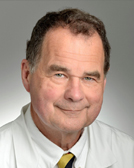
“For people with heart attacks, there wasn’t much you could do,” says Dr. John Parker, cardiologist at Sentara. “I don’t know how many nights I just spent the whole night in the ICU managing someone’s blood pressure and trying to keep them alive. It was a very humbling experience. We were grateful when people did well.”
In 1978, heart attack care began to change when Dr. Peter Rentrop used the first catheterization procedures to open occluded arteries. He also began the use of streptokinase to bust up clots.
Though these procedures were used to treat heart attacks, they were not performed in emergency situations but were carefully scheduled. Physicians used large French catheters and balloons, but no stents yet existed to keep arteries open. Procedures could take hours, as doctors inflated the balloon again and again to open the artery.
These procedures also had little equipment, Dr. Parker says. Low resolution video screens with video tape were the only way to visualize inside the heart vessels. Doses of radiation were also very high.
Thanks to improved patient outcomes, interventional cardiology began to develop quickly. In Virginia Beach, Dr. John Griffin was involved in clinical trials that proved urgent balloon angioplasty led to better outcomes than streptokinase. Smaller catheters were developed. Digital imaging made seeing inside the blood vessels easier than ever. New drug-eluting stents, instead of just holding the artery open, released medicines to help prevent scarring and stenosis of the blood vessel.

“Now if someone has a heart attack, I am notified by paramedics who are at their house with an EKG,” says Dr. Ronald McKechnie, a Bayview cardiologist at Chesapeake Regional Medical Center. “This allows us to rapidly mobilize our team and perform a cardiac catheterization, where we can actually open up the occluded artery with a stent within 90 total minutes of that notification. Patients are sometimes even healthy enough to go home the next day.”
Heart Disease Prevention
The speed and quality of heart attack care, combined with improved medications, is a key factor in preventing a secondary heart event. But cardiologists are now increasingly turning their attention to preventing primary heart events.
“Once you start having heart attacks, things start going downhill,” says Dr. Joseph Adinaro, cardiologist at Riverside Health System. “If we push that back by 10 years, we’ve made good improvement in quality of life. That’s the exciting stuff for me.”
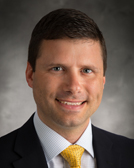
Dr. Adinaro says the effectiveness of statin medications is a key factor in the decrease of coronary artery disease deaths over the last 20 years. While these medicines used to only be available to people who had experienced a heart attack, they are now available to the millions of Americans with strong risk factors for heart disease.
“We realized that almost everyone benefits from cholesterol medicines,” says Dr. Adinaro. “If you give someone a cholesterol medication, it will reduce the risk of stroke or heart attack by 30 percent or so over the next 10 years, even if their cholesterol is normal.”
Dr. Adinaro says the new focus is finding the patients, such as people with diabetes or peripheral vascular disease, who have a high enough risk to benefit from the medicines in their lifetime. Dr. Adinaro believes genetics may play a role in this search.
“We are hopeful that we can identify these patients that have a higher risk and treat them early,” says Dr. Adinaro. “I’m hoping that down the line we have some really useful genetic tests that will improve our ability to care for patients, but we’re still not there yet.”
While genetics isn’t playing a large role in treatment yet, personalized medicines are now available in cardiology. Immunotherapy for high cholesterol is an option for the small portion of patients who cannot tolerate or who don’t respond appropriately to statins.
Injectable PCSK9 inhibitors use the patient’s own antibodies to deactivate proprotein convertase subtilisin kexin 9 in the liver and reduce LDL cholesterol by about 60 percent. Though these medicines are promising, costs are currently too prohibitive to allow them to be first line therapy.
“It’s the newer realm of medical treatment to use the immune system itself to clear cholesterol,” says Dr. Talreja. “But because they are personalized antibodies, they are more expensive to create and we’re trying to drive costs down.”
Structural Heart Conditions
Though genetics and personalized medicine are exciting advances, both Dr. Talreja and Dr. McKechnie agree that the single largest advance made in cardiology in the last 5 years has been the transcatheter aortic valve replacement (TAVR). This device has changed how structural heart defects are treated — and who qualifies for treatment.
“For 40 years, the only real treatment for aortic valve defects was an open-heart surgery where we replace the valve,” says Dr. Talreja. “There are obvious risks of performing the procedure in higher-risk patients. Understandably, as patients get older, surgeons are reluctant to do it because the surgery has considerable risk for those patients.”
As a minimally invasive procedure, TAVR opened up treatment options for older or higher-risk patients. The new heart valve is inserted through a catheter into the old valve. Once in place, the valve expands and takes over the heart valve’s work immediately.
The procedure has shown great success in improving heart valve function while reducing risks of surgery for patients. Even patients in their 90s have undergone the procedure in Hampton Roads, further increasing their longevity and quality of life.
Currently, the TAVR procedure is approved only for intermediate and high-risk patients. However, clinical trials are currently underway to see if the device is also appropriate and safe enough for younger, low-risk patients.
Abnormal Heart Rhythms
Other devices are also expanding treatment for abnormal heart rhythms. Forty years ago, the only treatments for heart rhythm problems were beta blockers and other medicines. But the creation of pacemakers and implantable defibrillators in the 1980s were a life-changing improvement for people with arrhythmias.
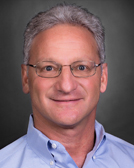
“The first implantable defibrillators were so big, the battery packs had to be in the abdomen in order for them to have enough charge to shock the heart and save someone’s life,” says Dr. Lee Kanter, cardiologist with Tidewater Physicians Multispecialty Group. “At the time, the charge was delivered by patches around the heart.”
Over time, technology has allowed the changes from patches to leads and to no leads at all. Smaller devices can be implanted inside the chest. Changes to the electrical waveform meant devices needed less energy for an effective charge.
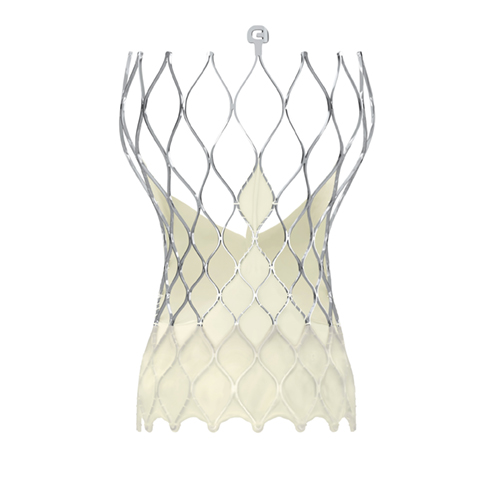
Photo courtesy of Medtronic ©2019
One of the biggest changes is that defibrillators no longer need testing. In the past, to test the efficacy of the defibrillator, patients were put in life-threatening rhythms and then shocked with their new, implanted device.
“It was very stressful for everyone in the room, the physician and patient and patient’s family,” says Dr. Kanter “Thankfully, the success of the implant has gone way up, while the risk has come down.”
Congestive Heart Failure
The success of all these new treatments are leading to longer lifespans, which in turn may be contributing to an increased number of people with congestive heart failure (CHF). Fortunately, from medicines to devices, the quality and length of life for patients with heart failure has improved dramatically.
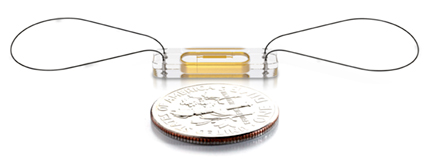
A key aspect of CHF treatment today is telemonitoring, which may involve a scale and blood pressure cuff connected to the Internet or a new device called CardioMEMS™. These devices wirelessly send information to the physician’s office for more accurate monitoring of fluid levels, blood pressure, and more.
“CardioMEMS is a device implanted in a 30-minute procedure,” says Dr. Talreja. “It’s the size of a grain of rice and sits in one of the great arteries of the body.”
The device doesn’t contain a battery, but charges via induction when patients lie on a specialized pillow. The patients only need to lie on the pillow for seconds for the device to charge, take a measurement of the pressure inside the blood vessel and relay that information to the physician’s office. If a patient’s measures are out of parameters, nurses can call to ask about diet and prescribe him or her a dose of medicine to reduce fluids.
“With this device, we can dramatically reduce the number of admissions and improve survival and quality of life,” says Dr. Talreja. “The device is an incredible cost savings for patients, health insurance, and hospital systems.”
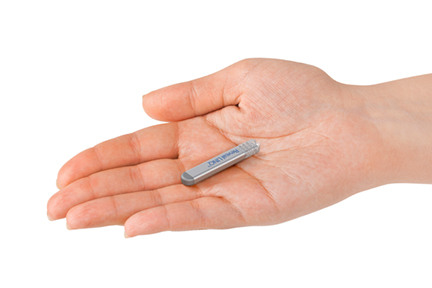
In addition to better monitoring, patients also have better choices in medications for heart failure. Sacubitril/valsartan dilates blood vessels and keeps them open, reducing blood pressure and relieving many symptoms of congestive heart failure. Patients on this new medication have a lower risk of mortality and hospitalization, as well as lower rates of shortness of breath and swelling. Its success has helped it quickly replace older medicines like enalapril.
In 2001, patients were given access to a new, FDA-approved treatment option: a biventricular pacemaker. Dr. Kanter was one of the physicians who participated in the MIRACLE study that led to the use of this device.
“The study was remarkably beneficial,” says Dr. Kanter. “It was really life changing for very sick people who we didn’t have much to offer.”
The three-lead pacemaker stimulates the heart, providing improved pumping ability. Patients showed improved quality of life, reduction in the size of the heart, and improved exercise tolerance.
The biventricular pacemaker, also called cardiac resynchronization therapy, has also evolved. Dr. Kanter says that while the first pacemaker took four hours to place, new tools allow placement within just an hour and a half.
In addition to pacemakers and heart transplant, patients also have a third surgical treatment option: the left ventricular assist device (LVAD). This device is implanted in the left side of the heart and attached to an external battery pack on a harness. It takes over much of the work of the heart, improving quality of life.
“Some people get that device when waiting for a heart transplant, but over the past ten years, many people can get it for continuation of life if they don’t have a transplant option,” says Dr. McKechnie.
Thanks to devices like the LVAD, in just 40 years cardiology has evolved from medications and blood pressure management to a field full of successful treatment options. As technology continues to evolve, patients will have more options than ever for a long, quality life.

